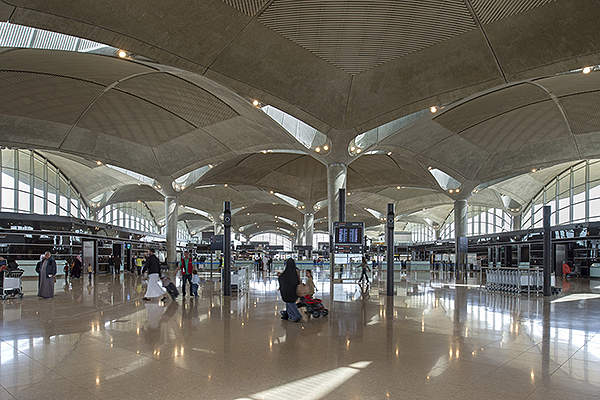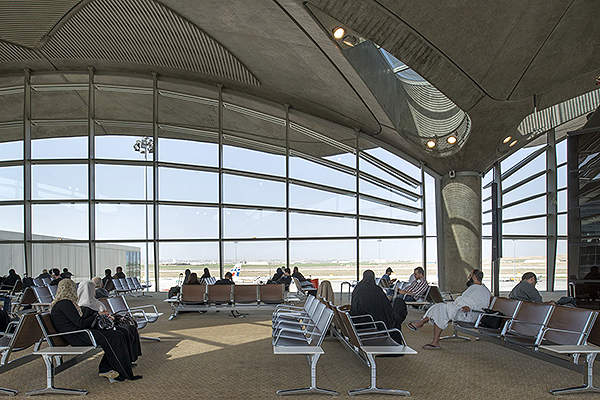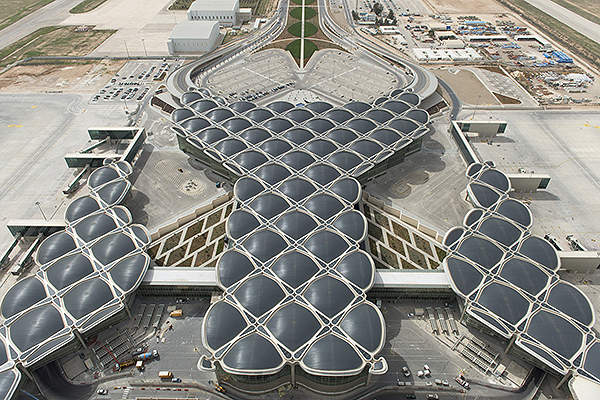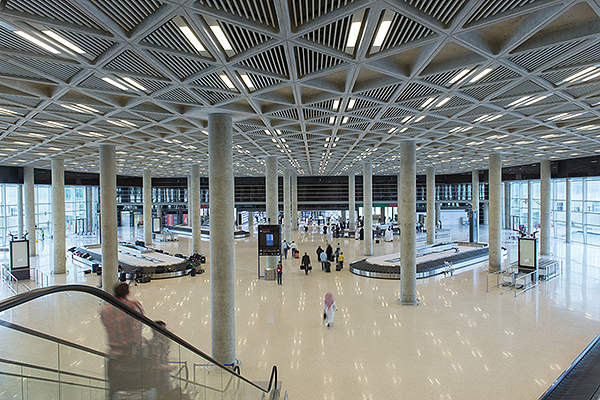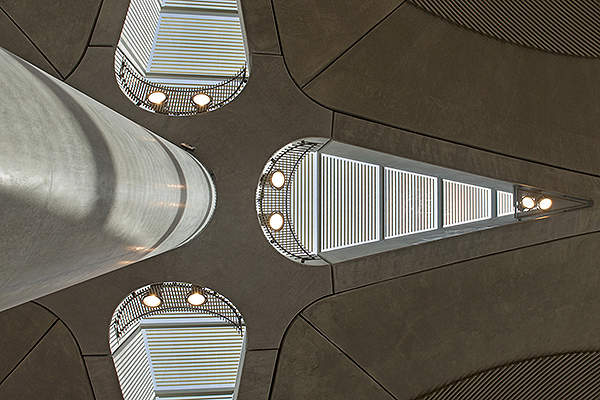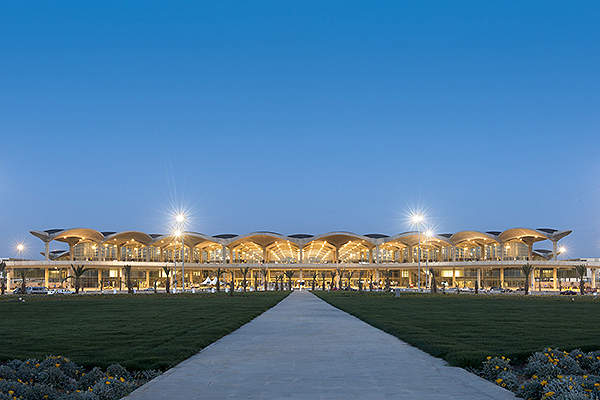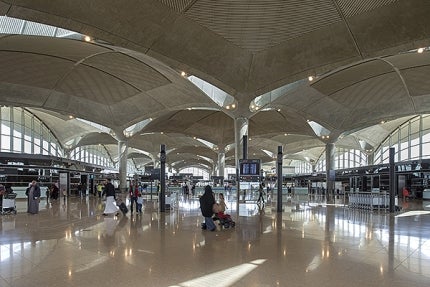
The new international terminal at Queen Alia International Airport, which is situated 35km from Amman, was inaugurated in March 2013. The passenger terminal has enabled a two-fold rise in the passenger capacity of the airport.
Aeroports de Paris Management is operating the newly constructed terminal under a 25-year BOT (build, operate, transfer) model. The project was financed by a group comprising Noor Financial Investment, Abu Dhabi Investment, J&P Avax, EDGO, and J&P Overseas.
Construction of the new terminal started in 2007 as part of complete rehabilitation and upgrade of the airport, except the runways. The terminal project formed part of the first part of the two-phased expansion. It has replaced one of the two passenger terminals at the airport. The old terminal has been demolished in the second phase of the rehabilitation project.
The second phase, valued approximately $214m, also included installation of seven additional contact stands and construction of other support facilities. The construction was started in January 2014 and was completed by September 2016.
The new terminal had a capacity to handle nine million passengers a year in phase one, which eventually increased to 12 million during the second phase of expansion. The passenger capacity is planned to be further increased to 16 million a year.
The airport witnessed 6.5 million passengers and 67,959 aircraft movements in 2013, while it witnessed more than 3.5 million passengers in H2 2016.
Purpose of the new terminal at Queen Alia airport
The new terminal construction was an element of the larger initiative of the Government of Jordan to increase the revenue derived from tourism.
Queen Alia International Airport is expected to witness approximately 12 million passengers a year by 2020. The new terminal enables the airport to grow at an annual rate of around 6% for the next two-and-half decades.
It consolidates the position of Amman as Levant Region’s primary hub and also supports the growth of tourism in Jordan.
Jordan now has flight services to/from 61 airports worldwide, while before the new terminal existed the number was 40 airports. The number of flights a day has now increased from 110 to 180.
Design of the new passenger terminal at Queen Alia
The new terminal building has been designed as per the topography and traditions of the region. The structure of the terminal building resembles desert palm leaves, with a sequence of domes protruding from columns supporting them. The summer heat of the region is severe, and the terminal has been constructed predominantly with concrete that supports insulation against heat.
Related project
Queen Alia International Airport, Jordan
Queen Alia international airport is situated in the Zizya area, 20 miles south of Amman, the capital city of Jordan. Spread over an area of 22 million square metres, the airport was inaugurated on 25 May 1983. It is owned and operated by Jordan’s Civil Aviation Regulatory Commission (CARC).
All sides of the terminal building are fitted with glass to ensure that aircraft are visible to passengers. The facades are shielded from direct sunlight by means of horizontal louvers, which focus on portions that are more exposed to sunlight.
The forecourt is also expanded to form a plaza, which includes trees and seating. The plaza facilitates congregations of passenger groups and families.
A noteworthy enhancement at the new terminal is the segregation of departures and arrivals according to international standards.
The terminal includes external courtyards that enhance the eco-friendly feature of the building. The trees in the courtyard cleanse the pollutant air before it gets absorbed into the air handling system.
Features of the Queen Alia international terminal
The new terminal earlier had a built-up area of 105,000m², while the second phase of expansion has added 43,513m². It has two piers of departure gates on both sides of the main building. The main terminal building is inclusive of processing areas, lounges, shops and restaurants.
The terminal has increased the total number of gates at the airport to 25. It features a remote lounge for boarding, to cater to various flights at the same time. It also includes clear signage, playing areas for kids, flight information screens, and varied customer support services.
The second phase has also newly added two business lounges, two duty-free shopping areas and four prayer rooms. The shops and boarding lounge are directly accessible to passengers, from the security check point.
The existing Wi-Fi system has been upgraded, more charging stations have been added, and ten travellators, 24 escalators and 18 lifts have been installed to minimise the transit time and distance for passengers.
Contractors involved with Queen Alia airport terminal project
Foster + Partners designed the new terminal building, and AIG (Airport International Group) carried out the construction and expansion. AIG is a consortium of regional and international investors including Noor Financial Investments, Invest AD, J&P Overseas, Edgo Group, Aeroports de Paris Management and J&P-Avax.
AIG appointed The Louis Berger Group as the independent engineering, procurement and construction contractor for the project.
Funding for the new terminal construction
The International Finance Corporation (IFC) provided $120m in funding for the new terminal construction project. The IFC also arranged for syndicated loans of $120m provided by various international lenders.

